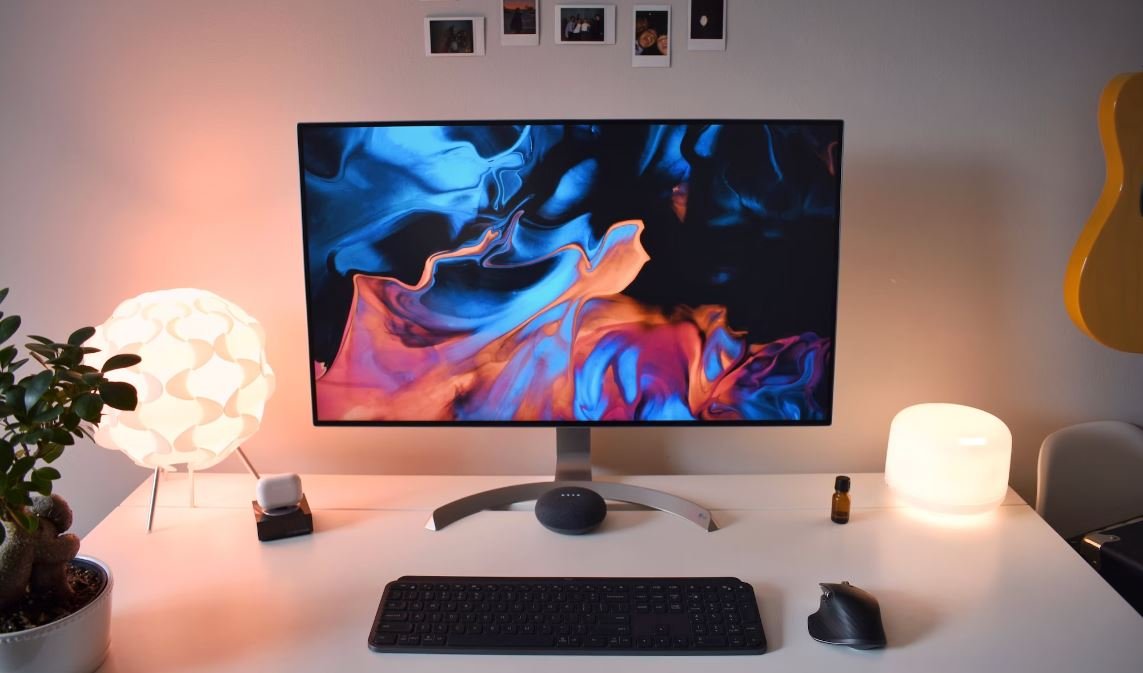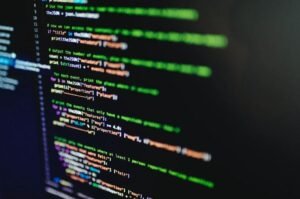What Is Production Possibility Curve: Explain with Diagram
The production possibility curve (PPC), also known as the production possibility frontier or the transformation curve, is a graphical representation of the different combinations of two goods or services that a country can produce using its available resources and technology. The PPC illustrates the concept of scarcity and the trade-offs that occur when allocating resources between the production of different goods.
Key Takeaways:
- The production possibility curve shows the maximum potential output of two goods or services that can be produced with given resources and technology.
- The curve demonstrates the opportunity cost, efficiency, and economic growth of a country.
- A shift or movement along the PPC indicates changes in the allocation of resources.
The production possibility curve is typically depicted as a concave curve that slopes downward from left to right. This shape represents the concept of increasing opportunity cost. As an economy produces more of a particular good, it must sacrifice increasing amounts of the other good due to limited resources and technology. *The PPC helps illustrate the concept of scarcity, as it shows the different possible combinations of goods that can be produced with the limited resources available.*
Consider an economy with limited resources that can produce only two goods: cars and computers. Table 1 represents the maximum number of cars and computers that can be produced using different resource allocations. By plotting these points on a graph, we can create a production possibility curve (see Figure 1).
| Resource Allocation | Cars | Computers |
|---|---|---|
| Option 1 | 100 | 0 |
| Option 2 | 80 | 20 |
| Option 3 | 60 | 40 |
| Option 4 | 40 | 60 |
| Option 5 | 20 | 80 |
| Option 6 | 0 | 100 |
*The production possibility curve demonstrates the concept of opportunity cost. As more resources are allocated to the production of cars, the production of computers must decrease, and vice versa.* The concave shape of the curve indicates that the opportunity cost of increasing car production becomes greater as more cars are produced.
The PPC can also be used to analyze efficiency and economic growth. Points on the curve represent efficient resource allocation, as all available resources are fully utilized. Points within the curve represent inefficient resource allocation, while points outside the curve are currently unattainable given the available resources and technology.
| Point | Efficiency |
|---|---|
| A | Inefficient |
| B | Inefficient |
| C | Inefficient |
| D | Efficient |
| E | Inefficient |
| F | Inefficient |
Changes in resource availability or improvements in technology can shift the entire production possibility curve outward, representing economic growth. When the curve shifts outward, a country can produce more of both goods without sacrificing as much of the other. This can occur due to factors such as increased labor force, technological advancements, or access to new resources.
It’s important to note that the production possibility curve assumes that resources are being used efficiently and that the available technology remains constant. Changes in resource allocations or improvements in technology can result in a shift or movement along the curve.
| Shift/Movement | Implication |
|---|---|
| Shift to the right | Economic growth |
| Movement along the curve | Change in resource allocation |
| Shift to the left | Decrease in resource availability |
*The production possibility curve is a valuable tool in economic analysis as it helps illustrate the concept of scarcity, opportunity cost, efficiency, and economic growth. Understanding the PPC can assist policymakers, businesses, and individuals in making informed decisions regarding resource allocation and trade-offs.*

Common Misconceptions
Misconception 1: Production Possibility Curve is a fixed and unchangeable representation of an economy
One common misconception about the production possibility curve (PPC) is that it is a static representation of an economy’s production possibilities, and that it remains unchanged over time. However, this is not accurate. The PPC is actually a dynamic model that represents the maximum output an economy can produce given its existing resources and technology. It is subject to change as resources and technology improve or decline.
- The PPC can shift outward if there are technological advancements.
- Changes in the availability of resources can cause the PPC to shift inward.
- Government policies can also influence the position of the PPC.
Misconception 2: The PPC shows the exact quantities of goods that can be produced
Another misconception is that the PPC provides specific quantities of goods that an economy can produce. In reality, the PPC illustrates the trade-off between two types of goods that can be produced. It shows the maximum combinations of goods that an economy can produce given its resources and technology.
- The PPC only shows the relative trade-offs between different goods.
- The exact quantities of goods produced will depend on the specific point chosen on the PPC.
- The shape of the PPC can provide information about the opportunity cost of producing one good over another.
Misconception 3: The PPC represents a static allocation of resources
Many people mistakenly believe that the PPC represents a fixed allocation of resources. However, the PPC only depicts the potential combinations of goods that can be produced at a given time period, assuming full utilization of resources. It does not provide information about how resources are actually allocated in the economy.
- The position of the PPC does not indicate the actual allocation of resources.
- The allocation of resources can change within the bounds of the PPC.
- An efficient allocation of resources can be achieved at any point along the PPC.
Misconception 4: The PPC can only shift outward
Some individuals mistakenly believe that the PPC can only shift outward, indicating an increase in an economy’s production capacity. While it is true that the PPC can shift outward due to technological advancements or increased resource availability, it can also shift inward due to factors such as natural disasters, resource depletion, or inefficient resource allocation.
- The PPC can shift inward due to factors that reduce a country’s production capacity.
- An inward shift of the PPC represents a decrease in an economy’s output possibilities.
- The PPC is a dynamic model that accounts for changes in production possibilities over time.
Misconception 5: The PPC only considers two goods
One common misconception is that the PPC only considers the production possibilities of two goods. However, the PPC can be extended to represent more than two goods. It is a flexible model that can be adapted to represent economies with multiple goods and services.
- The PPC can be expanded to include more goods and services without losing its essential characteristics.
- The opportunity cost and trade-off principles of the PPC apply to multiple goods as well.
- The shape of the PPC can change when representing more goods, but the underlying concepts remain the same.

What Is Production Possibility Curve: Explain with Diagram
Table 1: Production Possibility Curve Model for an Economy
In economics, the Production Possibility Curve (PPC) is a graphical representation of the different combinations of two goods that an economy can produce given its resources and technology. The PPC illustrates the concept of scarcity, showing the trade-offs an economy faces when allocating resources between the production of two goods. The following table provides an example of a production possibility curve model for an economy:
| Combination | Good X (in units) | Good Y (in units) |
|---|---|---|
| Point A | 10 | 0 |
| Point B | 8 | 2 |
| Point C | 6 | 4 |
| Point D | 4 | 6 |
| Point E | 2 | 8 |
| Point F | 0 | 10 |
Table 2: Opportunity Cost of Good Y for Various Combinations on the PPC
The opportunity cost of producing one more unit of Good Y increases as an economy shifts resources from producing Good X to producing more of Good Y. The following table illustrates the opportunity cost of Good Y for different combinations on the PPC:
| Combination | Good X (in units) | Good Y (in units) | Opportunity Cost of Good Y |
|---|---|---|---|
| Point A | 10 | 0 | N/A |
| Point B | 8 | 2 | 1 unit of Good X |
| Point C | 6 | 4 | 1 unit of Good X |
| Point D | 4 | 6 | 1 unit of Good X |
| Point E | 2 | 8 | 1 unit of Good X |
| Point F | 0 | 10 | 1 unit of Good X |
Table 3: Efficient and Inefficient Points on the PPC
Points on the PPC represent efficient allocation of resources, while points inside the curve indicate inefficient utilization. The following table demonstrates efficient and inefficient points on the PPC:
| Combination | Good X (in units) | Good Y (in units) | Efficiency |
|---|---|---|---|
| Point A | 10 | 0 | Efficient |
| Point B | 8 | 2 | Efficient |
| Point C | 6 | 4 | Efficient |
| Point D | 4 | 6 | Inefficient |
| Point E | 2 | 8 | Inefficient |
| Point F | 0 | 10 | Inefficient |
Table 4: Law of Increasing Opportunity Cost
The law of increasing opportunity cost states that as an economy produces more of one good, the opportunity cost of producing an additional unit of that good increases. The following table illustrates the law of increasing opportunity cost:
| Combination | Good X (in units) | Good Y (in units) | Opportunity Cost of Good Y |
|---|---|---|---|
| Point A | 10 | 0 | N/A |
| Point B | 8 | 2 | 1 unit of Good X |
| Point C | 6 | 4 | 1 unit of Good X |
| Point D | 4 | 6 | 2 units of Good X |
| Point E | 2 | 8 | 4 units of Good X |
| Point F | 0 | 10 | 10 units of Good X |
Table 5: Economic Growth and Expansion of PPC
Economic growth can lead to an expansion of the production possibility curve. The following table shows the effect of economic growth on the PPC:
| Combination | Good X (in units) | Good Y (in units) |
|---|---|---|
| Point A (Initial) | 10 | 0 |
| Point G (After economic growth) | 12 | 4 |
Table 6: Attainable and Unattainable Combinations
The PPC indicates the attainable and unattainable combinations of goods within an economy. The following table showcases attainable and unattainable combinations:
| Combination | Good X (in units) | Good Y (in units) | Attainability |
|---|---|---|---|
| Point A | 10 | 0 | Attainable |
| Point B | 8 | 2 | Attainable |
| Point C | 6 | 4 | Attainable |
| Point D | 4 | 6 | Unattainable |
| Point E | 2 | 8 | Unattainable |
| Point F | 0 | 10 | Unattainable |
Table 7: Trade-Offs and Marginal Rate of Transformation
Trade-offs occur as an economy shifts resources between the production of two goods. The marginal rate of transformation represents the rate at which one good must be sacrificed to increase the production of another. The following table demonstrates trade-offs and the marginal rate of transformation:
| Combination | Good X (in units) | Good Y (in units) | Trade-Off |
|---|---|---|---|
| Point A | 10 | 0 | N/A |
| Point B | 8 | 2 | 1 unit of Good X |
| Point C | 6 | 4 | 1 unit of Good X |
| Point D | 4 | 6 | 2 units of Good X |
| Point E | 2 | 8 | 4 units of Good X |
| Point F | 0 | 10 | 10 units of Good X |
Table 8: Economic Efficiency and Full Employment
An economy operates at full employment and economic efficiency when it produces at a point on the PPC. The following table demonstrates economic efficiency and full employment:
| Combination | Good X (in units) | Good Y (in units) | Economic Efficiency |
|---|---|---|---|
| Point A | 10 | 0 | Efficient (Full Employment) |
| Point B | 8 | 2 | Inefficient (Underemployment) |
Table 9: Factors Influencing the PPC
Various factors can cause shifts or changes in the PPC. The following table highlights some factors influencing the PPC:
| Factors | Effect on the PPC |
|---|---|
| Technological Advancements | Shifts the PPC outward |
| Changes in Resource Availability | Shifts the PPC inward or outward |
| Changes in Workforce Skills | Shifts the PPC inward or outward |
| Changes in Capital Stock | Shifts the PPC outward |
Table 10: Unemployment and Inefficient Resource Allocation
Unemployment can result in an inefficient allocation of resources within an economy, leading to a point inside the PPC. The following table exemplifies the relationship between unemployment and inefficient resource allocation:
| Combination | Good X (in units) | Good Y (in units) | Efficiency |
|---|---|---|---|
| Point A | 10 | 0 | Efficient (Full Employment) |
| Point B | 8 | 2 | Inefficient (Underemployment) |
In conclusion, the Production Possibility Curve is a valuable tool in economics that helps us understand efficient allocation of resources, opportunity costs, trade-offs, economic growth, and the impact of various factors on an economy’s production possibilities. By analyzing the data and information presented in the tables above, we can gain insights into the concept of the Production Possibility Curve and its relevance in decision-making and resource management in an economy.
Frequently Asked Questions
What is a Production Possibility Curve?
A Production Possibility Curve (PPC) is a graphical representation of the maximum potential output that an economy can produce, given the resources and technology available. It illustrates the trade-offs an economy faces when allocating its limited resources between the production of different goods and services.
What does a Production Possibility Curve show?
A Production Possibility Curve shows the various combinations of two goods an economy can produce with its available resources. It demonstrates the concept of opportunity cost, as the curve reflects the idea that producing more of one good requires sacrificing the production of another good.
How is a Production Possibility Curve depicted?
A Production Possibility Curve is usually depicted as a concave-shaped curve, sloping downward from left to right. The curve represents the limits of an economy’s production capacity and shows the efficient and inefficient combinations of goods that can be produced.
What factors are considered in constructing a Production Possibility Curve?
When constructing a Production Possibility Curve, factors such as resources, technology, and efficiency are taken into account. The availability and quality of resources, technological advancements, and the economy’s ability to utilize resources efficiently all influence the shape and position of the curve.
What is the significance of points on the Production Possibility Curve?
Points on the Production Possibility Curve represent efficient allocation of resources, where an economy is utilizing its resources to its maximum potential. These points indicate that all resources are fully employed and there is no waste in production.
What does it mean if a point is inside the Production Possibility Curve?
If a point is inside the Production Possibility Curve, it indicates that the economy is operating below its maximum potential. It suggests that there is underutilization of resources, and the economy is not achieving optimum production efficiency.
What does it mean if a point is outside the Production Possibility Curve?
If a point lies outside the Production Possibility Curve, it represents an unattainable combination of goods with the given resources and technology. It implies that the economy lacks the necessary resources or technology to produce at such levels.
Can a Production Possibility Curve shift over time?
Yes, a Production Possibility Curve can shift over time due to changes in resources, technology, and other factors. The curve can shift outward if there are increases in available resources or technological advancements, indicating improved production possibilities. Likewise, the curve can shift inward if there are decreases in resources or technological regressions.
What does a straight-line Production Possibility Curve indicate?
A straight-line Production Possibility Curve indicates constant opportunity cost. This means that the resources used to produce one good can be easily switched to produce another good at a constant rate, without any diminishing returns or increasing opportunity costs.
What are the limitations of a Production Possibility Curve?
Some limitations of a Production Possibility Curve include assumptions of fixed resources, ceteris paribus (all other factors remaining constant), and simplification of the real-world complexities. Additionally, the curve does not account for factors like external shocks, changes in consumer preferences, and fluctuations in resource availability that can impact an economy’s production possibilities.




